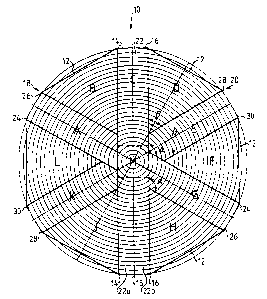Some of the information on this Web page has been provided by external sources. The Government of Canada is not responsible for the accuracy, reliability or currency of the information supplied by external sources. Users wishing to rely upon this information should consult directly with the source of the information. Content provided by external sources is not subject to official languages, privacy and accessibility requirements.
Any discrepancies in the text and image of the Claims and Abstract are due to differing posting times. Text of the Claims and Abstract are posted:
| (12) Patent: | (11) CA 2105868 |
|---|---|
| (54) English Title: | PROCESS FOR SAWING LOGS |
| (54) French Title: | PROCEDE DE SCIAGE DE BILLES |
| Status: | Expired and beyond the Period of Reversal |
| (51) International Patent Classification (IPC): |
|
|---|---|
| (72) Inventors : |
|
| (73) Owners : |
|
| (71) Applicants : |
|
| (74) Agent: | SMART & BIGGAR LP |
| (74) Associate agent: | |
| (45) Issued: | 2003-08-19 |
| (86) PCT Filing Date: | 1992-03-17 |
| (87) Open to Public Inspection: | 1992-10-01 |
| Examination requested: | 1999-03-09 |
| Availability of licence: | N/A |
| Dedicated to the Public: | N/A |
| (25) Language of filing: | English |
| Patent Cooperation Treaty (PCT): | Yes |
|---|---|
| (86) PCT Filing Number: | PCT/SE1992/000164 |
| (87) International Publication Number: | SE1992000164 |
| (85) National Entry: | 1993-09-09 |
| (30) Application Priority Data: | ||||||
|---|---|---|---|---|---|---|
|
The invention relates to a method of sawing
a log in order to provide a high yield of vertical-
grained pieces of lumber. According to the inven-
tion, this is achieved by sawing from the log not on-
ly pieces of lumber (B; D; F, H, J; L) which are
triangular or sector-shaped in cross-section but also
essentially plane-parallel boards (A, C, E, G, T, K)
between adjacent pairs of the pieces which are tri-
angular or sector-shaped in cross-section.
<IMG>
Note: Claims are shown in the official language in which they were submitted.
Note: Descriptions are shown in the official language in which they were submitted.

2024-08-01:As part of the Next Generation Patents (NGP) transition, the Canadian Patents Database (CPD) now contains a more detailed Event History, which replicates the Event Log of our new back-office solution.
Please note that "Inactive:" events refers to events no longer in use in our new back-office solution.
For a clearer understanding of the status of the application/patent presented on this page, the site Disclaimer , as well as the definitions for Patent , Event History , Maintenance Fee and Payment History should be consulted.
| Description | Date |
|---|---|
| Time Limit for Reversal Expired | 2008-03-17 |
| Letter Sent | 2007-03-19 |
| Inactive: Reversal of deemed expired status | 2006-04-04 |
| Inactive: Delete abandonment | 2006-03-13 |
| Inactive: Payment - Insufficient fee | 2006-03-07 |
| Inactive: Entity size changed | 2005-04-05 |
| Grant by Issuance | 2003-08-19 |
| Inactive: Cover page published | 2003-08-18 |
| Pre-grant | 2003-05-23 |
| Inactive: Final fee received | 2003-05-23 |
| Notice of Allowance is Issued | 2003-01-28 |
| Notice of Allowance is Issued | 2003-01-28 |
| Letter Sent | 2003-01-28 |
| Inactive: Approved for allowance (AFA) | 2003-01-17 |
| Amendment Received - Voluntary Amendment | 2002-09-19 |
| Inactive: S.30(2) Rules - Examiner requisition | 2002-05-22 |
| Inactive: Entity size changed | 2002-03-05 |
| Time Limit for Reversal Expired | 2001-03-19 |
| Deemed Abandoned - Failure to Respond to Maintenance Fee Notice | 2000-03-17 |
| Inactive: Status info is complete as of Log entry date | 1999-04-09 |
| Inactive: RFE acknowledged - Prior art enquiry | 1999-04-09 |
| Inactive: Application prosecuted on TS as of Log entry date | 1999-04-09 |
| Request for Examination Requirements Determined Compliant | 1999-03-09 |
| All Requirements for Examination Determined Compliant | 1999-03-09 |
| Application Published (Open to Public Inspection) | 1992-10-01 |
| Abandonment Date | Reason | Reinstatement Date |
|---|---|---|
| 2000-03-17 |
The last payment was received on 2003-02-28
Note : If the full payment has not been received on or before the date indicated, a further fee may be required which may be one of the following
Patent fees are adjusted on the 1st of January every year. The amounts above are the current amounts if received by December 31 of the current year.
Please refer to the CIPO
Patent Fees
web page to see all current fee amounts.
| Fee Type | Anniversary Year | Due Date | Paid Date |
|---|---|---|---|
| MF (application, 6th anniv.) - small | 06 | 1998-03-17 | 1998-02-02 |
| MF (application, 7th anniv.) - small | 07 | 1999-03-17 | 1999-02-19 |
| Request for examination - small | 1999-03-09 | ||
| MF (application, 8th anniv.) - standard | 08 | 2000-03-17 | 2000-02-18 |
| MF (application, 9th anniv.) - small | 09 | 2001-03-19 | 2001-02-21 |
| MF (application, 10th anniv.) - standard | 10 | 2002-03-18 | 2002-02-20 |
| MF (application, 11th anniv.) - standard | 11 | 2003-03-17 | 2003-02-28 |
| Final fee - standard | 2003-05-23 | ||
| MF (patent, 12th anniv.) - small | 2004-03-17 | 2004-02-16 | |
| MF (patent, 13th anniv.) - standard | 2005-03-17 | 2005-03-17 | |
| MF (patent, 14th anniv.) - standard | 2006-03-17 | 2006-02-20 |
Note: Records showing the ownership history in alphabetical order.
| Current Owners on Record |
|---|
| MARTIN WIKLUND |
| Past Owners on Record |
|---|
| None |